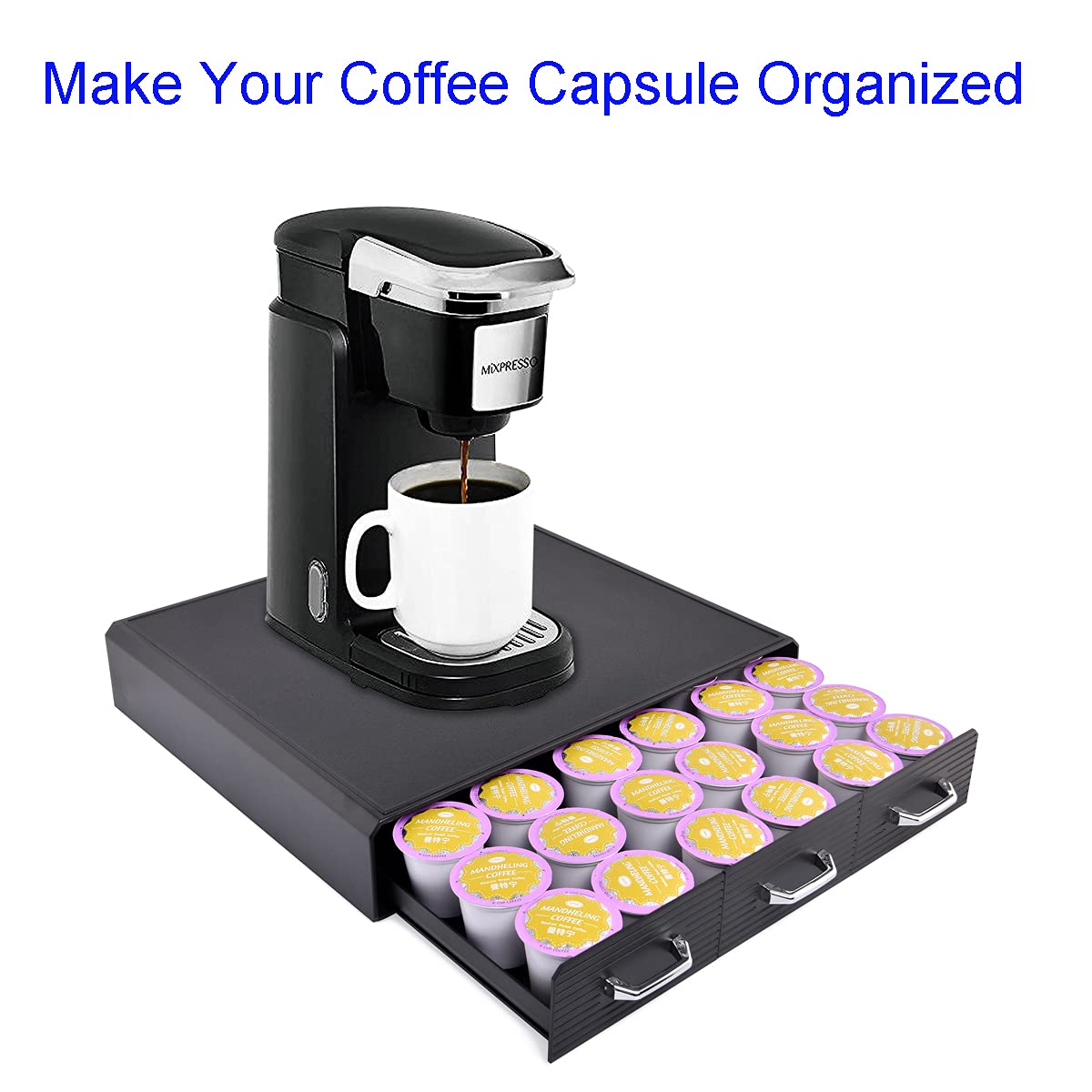Maintaining your pod coffee maker in tiptop shape is essential to ensure that you continue to enjoy smooth and flavorful cups of coffee every time. And when it comes to keeping your machine running at its best, descaling is a crucial step that often gets overlooked. Descaling helps remove mineral deposits and limescale buildup that can hinder the performance of your coffee maker. By regularly descaling your pod coffee maker, you can extend its lifespan and guarantee the freshest and most delicious cups of coffee for your daily caffeine fix. So, how often do you descale your pod coffee maker? Let’s explore the importance of descaling and what frequency is recommended for this vital maintenance task.
Importance of Descaling
Why Descaling is Important
Descaling is an essential maintenance task for your pod coffee maker that should not be overlooked. Over time, mineral deposits from the water you use to brew your coffee can build up inside the machine. This mineral buildup, also known as limescale, can negatively impact the performance and lifespan of your coffee maker. Descaling helps to remove these deposits, ensuring that your coffee maker continues to function optimally and consistently delivers a great cup of coffee.
Effects of Neglecting Descaling
Neglecting regular descaling can have several detrimental effects on your pod coffee maker. Firstly, limescale buildup can clog the internal components of the machine, causing it to work harder to heat and pump water. This can lead to increased energy consumption and a shorter lifespan for your coffee maker. Additionally, limescale can affect the taste and aroma of your coffee, resulting in a less enjoyable brewing experience. By neglecting descaling, you may be compromising the quality of your coffee and potentially damaging your machine in the long run.
Determining the Frequency
Manufacturer’s Recommendations
The frequency at which you should descale your pod coffee maker can vary depending on the specific model and manufacturer. It is always a good idea to consult the manufacturer’s instructions or user manual for guidance on descaling. These guidelines will provide you with the most accurate information for your particular coffee maker.
Water Hardness
Another factor to consider when determining the frequency of descaling is the hardness of the water you use. Hard water contains a higher concentration of minerals, making limescale buildup more likely. If you live in an area with hard water, you may need to descale your coffee maker more frequently compared to those in areas with softer water.
Usage Frequency
The frequency at which you use your pod coffee maker also plays a role in determining how often you should descale it. If you use your coffee maker daily or multiple times per day, you may need to descale more frequently to prevent significant limescale buildup. On the other hand, if you only use your coffee maker occasionally, you may be able to extend the time between descaling sessions.
Signs That Your Pod Coffee Maker Needs Descaling
Build-up of Limescale
One of the most obvious signs that your pod coffee maker requires descaling is the visible build-up of limescale. This can manifest as a chalky or white residue on the internal components, including the heating element and water reservoir. If you notice any limescale buildup, it is a clear indication that your machine needs descaling to maintain its performance.
Slow Brewing Time
If your pod coffee maker takes longer than usual to brew a cup of coffee, it may be a sign that limescale is obstructing the flow of water through the machine. The mineral deposits can block the water passages, resulting in decreased water flow and slower brewing times. Descaling can help restore the proper flow of water and improve the speed and efficiency of the brewing process.
Strange Taste or Smell
Another indicator that your pod coffee maker needs descaling is a strange or off-putting taste or smell in your coffee. The presence of limescale can alter the flavor and aroma of your brew, giving it a bitter or metallic taste. If you notice any unusual flavors or odors in your coffee, it is a clear indication that descaling is necessary to ensure a clean and enjoyable brewing experience.
Descale Methods for Pod Coffee Makers
Using Vinegar
One popular method for descaling pod coffee makers is using vinegar. Vinegar is an effective natural cleanser that can break down limescale and remove mineral deposits. To descale your coffee maker with vinegar, start by filling the water reservoir with a mixture of equal parts white vinegar and water. Run a brewing cycle without a coffee pod, allowing the vinegar solution to pass through the machine. After the cycle is complete, run a few cycles with clean water to rinse out any residual vinegar.
Using Descaling Solution
If you prefer a ready-made descaling solution, you can find specific descaling products designed for pod coffee makers. These descaling solutions are formulated to effectively remove limescale while being safe for your machine. Simply follow the instructions provided with the descaling solution for the appropriate mixing ratios and brewing cycles. Remember to rinse your coffee maker thoroughly with clean water afterward to ensure the removal of any residue.
Using Lemon Juice
For those who prefer a more natural alternative to vinegar, lemon juice can be used for descaling. Lemon juice contains citric acid, which is effective at breaking down limescale. To descale with lemon juice, mix equal parts lemon juice and water in the water reservoir. Run a brewing cycle without a coffee pod to allow the lemon juice solution to circulate throughout the coffee maker. Follow up with several cycles of clean water to eliminate any remaining lemon juice.
Using Baking Soda
Baking soda is another household ingredient that can be used to descale your pod coffee maker. It acts as a gentle abrasive, helping to scrub away limescale without damaging the machine. To descale with baking soda, create a paste by mixing baking soda with water. Apply the paste to the areas affected by limescale, such as the internal components and the water reservoir. Gently scrub the surfaces with a soft brush or cloth, then rinse thoroughly with clean water.
Step-by-Step Guide to Descaling a Pod Coffee Maker
Preparing the Machine
Before descaling your pod coffee maker, ensure that it is unplugged and cool to the touch. Remove any remaining coffee pods or filters from the machine and empty the water reservoir. Disassemble any removable parts, such as the drip tray or water filter, and clean them separately.
Mixing the Descaling Solution
Depending on the descaling method you choose, mix the appropriate solution according to the instructions provided. Whether you are using vinegar, a descaling solution, lemon juice, or baking soda, carefully measure and mix the ingredients to create the recommended solution.
Running the Descaling Cycle
Fill the water reservoir with the descaling solution, making sure to follow the recommended ratios provided. Place an empty coffee mug or container on the drip tray to catch the descaling solution as it passes through the machine. Start the brewing cycle without a coffee pod, allowing the descaling solution to flow through the machine. Repeat the brewing cycle as necessary, following the instructions from the descaling solution or method you are using.
Rinsing and Cleaning
Once the descaling cycle is complete, it is essential to thoroughly rinse your coffee maker with clean water. Empty the water reservoir and fill it with fresh water. Run multiple brewing cycles without a coffee pod to flush out any remaining descaling solution or residue.
Alternative Methods for Descaling
Using Citric Acid
Citric acid is another effective alternative for descaling your pod coffee maker. Similar to lemon juice, citric acid breaks down limescale and removes mineral deposits. Follow the instructions on the citric acid packaging to create the appropriate solution, then proceed with the descaling process as outlined for vinegar or lemon juice.
Using Denture Tablets
Believe it or not, denture tablets can be used to descale your coffee maker. These tablets contain citric acid and effervescent properties that help break down limescale. Simply drop one or two denture tablets into the water reservoir filled with water. Allow the tablets to dissolve, then run a brewing cycle without a coffee pod. Rinse the machine thoroughly with clean water afterward.
Using White Vinegar
In addition to vinegar, distilled white vinegar can also be used effectively for descaling your pod coffee maker. It has similar descaling properties and can help remove limescale. Dilute the white vinegar with water using a 1:1 ratio, then follow the instructions provided for the vinegar descaling method.
Preventive Measures to Reduce Descaling Frequency
Using Filtered Water
One preventive measure to reduce the frequency of descaling is using filtered water in your coffee maker. Filters, such as activated charcoal filters or in-line water filters, can remove minerals and impurities from the water, preventing limescale buildup. By using filtered water, you can extend the time between descaling sessions and ensure a cleaner brewing process.
Regular Cleaning
In addition to descaling, regular cleaning of your pod coffee maker is crucial for maintaining its performance and longevity. After each use, make sure to rinse out the water reservoir and wipe down the external surfaces of the machine. Cleaning the brew head and the drip tray on a weekly basis can help prevent the accumulation of coffee residue and oils, which can contribute to clogs and malfunctions.
Proper Storage
Properly storing your pod coffee maker when it is not in use can also help reduce the need for frequent descaling. Ensure that the machine is thoroughly cleaned and dried before storing it in a cool, dry place. Avoid leaving water or moisture in the water reservoir, as this can promote the growth of bacteria and contribute to limescale buildup.
Benefits of Regular Descaling
Improved Coffee Taste
One of the significant benefits of regular descaling is an improved coffee taste. Limescale buildup can affect the flavor and aroma of your coffee, resulting in a less enjoyable brewing experience. By descaling regularly, you can ensure that your coffee tastes its best, with all the delicious flavors and nuances preserved.
Extended Lifespan of the Machine
Regular descaling can also help extend the lifespan of your pod coffee maker. By removing limescale and preventing clogs, you can keep your machine running smoothly and efficiently. This reduces the strain on the internal components and can result in a longer-lasting coffee maker, saving you money in the long run.
Prevention of Clogs and Malfunctions
Limescale buildup can lead to clogs and malfunctions in your pod coffee maker. By descaling regularly, you can prevent these issues from occurring and maintain the optimal performance of your machine. Preventing clogs not only ensures a consistent brewing process but also eliminates the need for costly repairs or replacements.
Common Mistakes to Avoid when Descaling
Using the Wrong Descaling Solution
One common mistake to avoid when descaling your pod coffee maker is using the wrong descaling solution. Not all coffee makers are compatible with the same descaling methods or solutions. Always refer to the manufacturer’s instructions or user manual to determine which descaling method is recommended for your specific machine.
Not Following Manufacturer’s Instructions
Another mistake to avoid is not following the manufacturer’s instructions or guidelines for descaling. Each coffee maker may have specific requirements or recommendations for descaling. It is crucial to read and understand the instructions provided to ensure that the descaling process is done correctly and safely.
Skipping the Rinse Cycle
Skipping the rinse cycle after descaling is another mistake that should be avoided. Rinsing the coffee maker with clean water after descaling helps remove any residual descaling solution or mineral deposits. Failing to rinse the machine properly can leave behind residue that may affect the taste of your coffee or cause clogs in the future.
Conclusion
Taking care of your pod coffee maker through regular descaling is essential to maintain its performance, enhance the taste of your coffee, and extend its lifespan. By understanding the importance of descaling, determining the frequency based on manufacturer’s recommendations, water hardness, and usage frequency, and recognizing the signs that your coffee maker needs descaling, you can ensure that your brewing experience remains enjoyable and consistent. Whether you choose to descale using vinegar, descaling solutions, lemon juice, or baking soda, following the step-by-step guide and avoiding common mistakes will help you keep your coffee maker in optimal condition. Additionally, implementing preventive measures such as using filtered water, regular cleaning, and proper storage can further reduce the frequency of descaling. By practicing these maintenance habits, you can reap the benefits of improved coffee taste, an extended lifespan for your machine, and the prevention of clogs and malfunctions. So take the time to descale your pod coffee maker regularly and enjoy a delicious cup of coffee every time.




